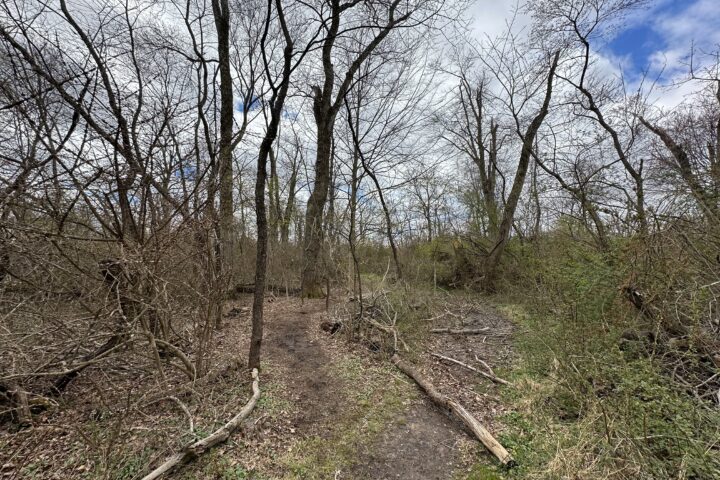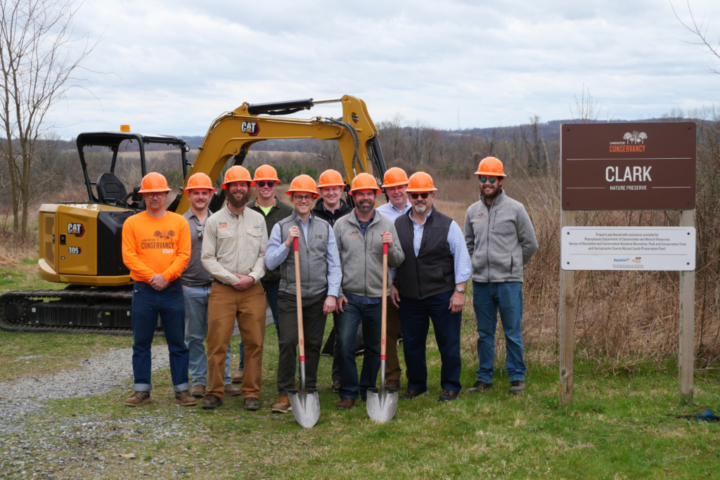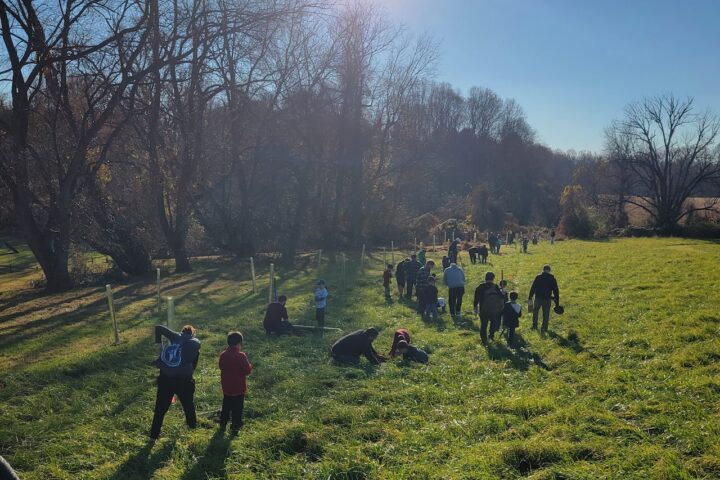It makes sense that trails are often built along streams. The land is usually flat and also undevelopable, since it’s so close to water. Those circumstances can help make trails near water easier to develop, but trails near water come with headaches too, like potential flooding and additional permits. That’s why many trail designers are starting to think about trails and water not as separate, but as two halves to manage together.
Greenways – they’re discovering – are also blue.
Designers maximize their investment by restoring streams at the same time as building a trail. Stream bank restoration helps protect the trail by reducing flood impacts, while also providing environmental benefits like improved water quality. These stacked benefits expand funding options to support both trails and waterways.
In central Pennsylvania, for example, the Steinman Foundation is working with local municipalities to construct a 2.5-mile greenway while also restoring nearby streams and wetlands. The project will not only remove over 140,000 cubic yards of legacy sediment, it will also link residents and visitors to local businesses. Thanks to its diverse benefits, this $10-to-$14-million project is leveraging funding from multiple state agencies including DCNR and the Department of Environmental Protection (DEP).
Another “blue” greenway is the 1.2-mile Paxtang Parkway section of the Capital Area Greenbelt. Unmanaged stormwater runoff has degraded the trail. To fix it, the Capital Area Greenbelt Association realized they had to manage not just the trail but also the stormwater from nearby Spring Creek. With that mindset, they’ve raised more than $2.5 million from PennDOT, DCNR, DEP, and the Chesapeake Bay Trust for trail construction and riparian buffer restoration.
If you have a trail along a stream, consider thinking of it as both green and blue. Combining trail work with stream restoration is a great way to expand your funding options, improve a local ecosystem, and provide recreation benefits to the public.
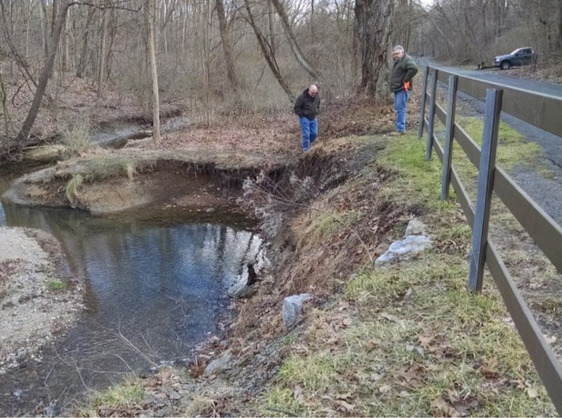
Paxtang Parkway and Spring Creek before…
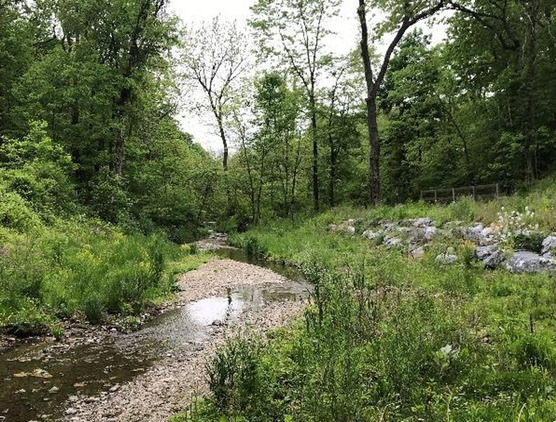
Paxtang Parkway and Spring Creek after…
This post was adapted from a release by the Pennsylvania Department of Conservation and Natural Resources (DCNR).


